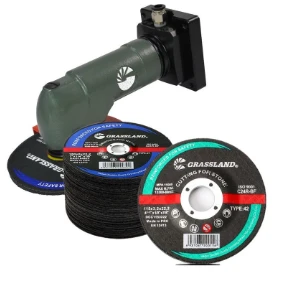

Selecting the right cutting disc depends heavily on the material you are working with and the precision required. For instance, cutting a thick steel beam would benefit from an abrasive disc, while slicing through granite or marble would be better suited to a diamond disc. Using the wrong type of disc can not only damage the material but can also pose significant safety risks to the operator due to disc failure or breakage. Professional expertise is essential when evaluating which cutting disc to use. This involves not only understanding the properties of the discs but also rigorously assessing the work environment, equipment compatibility, and the specific requirements of the cutting task. Consulting with manufacturers or suppliers who specialize in cutting technology can provide insights into the latest advancements and innovations in cutting disc technology, ensuring that the chosen tool maximizes efficiency and performance. In terms of authority and trustworthiness, it's important to rely on cutting discs from well-established brands known for their quality and safety standards. Experienced professionals often choose products from companies that provide comprehensive product information, certifications, and warranties. This not only assures quality but also enhances workplace safety, a paramount concern in environments where cutting discs are extensively used. In summary, understanding the different types of cutting discs and their respective applications is crucial for achieving optimal results. Whether dealing with hard, durable materials requiring diamond discs, soft metals needing carbide options, or versatile applications suited for abrasive discs, the key lies in informed decision-making backed by expertise and reliable products. Ensuring that safety and effectiveness are prioritized will lead to successful outcomes and sustainable operations.
Post time:Jan - 11 - 2025

















